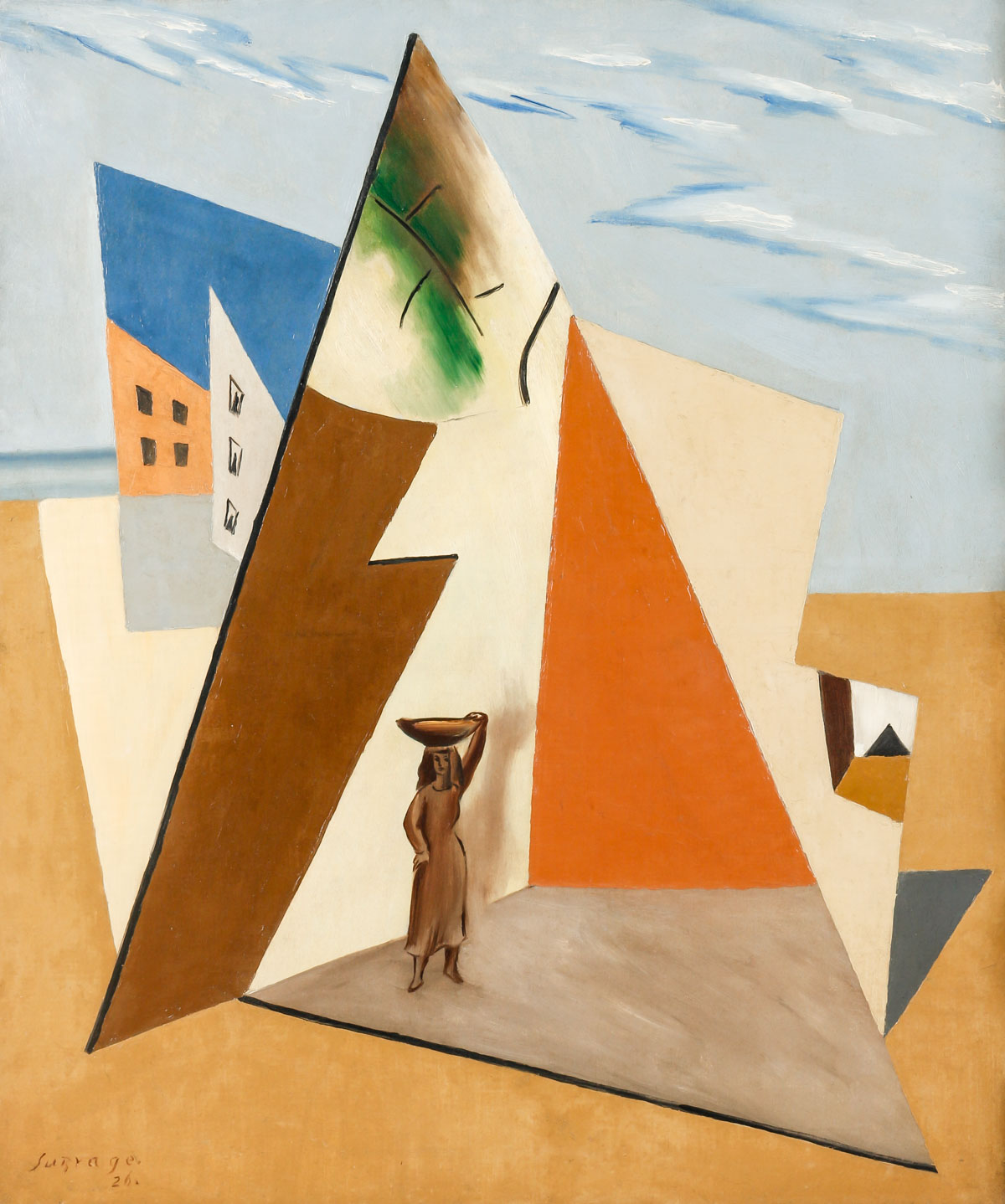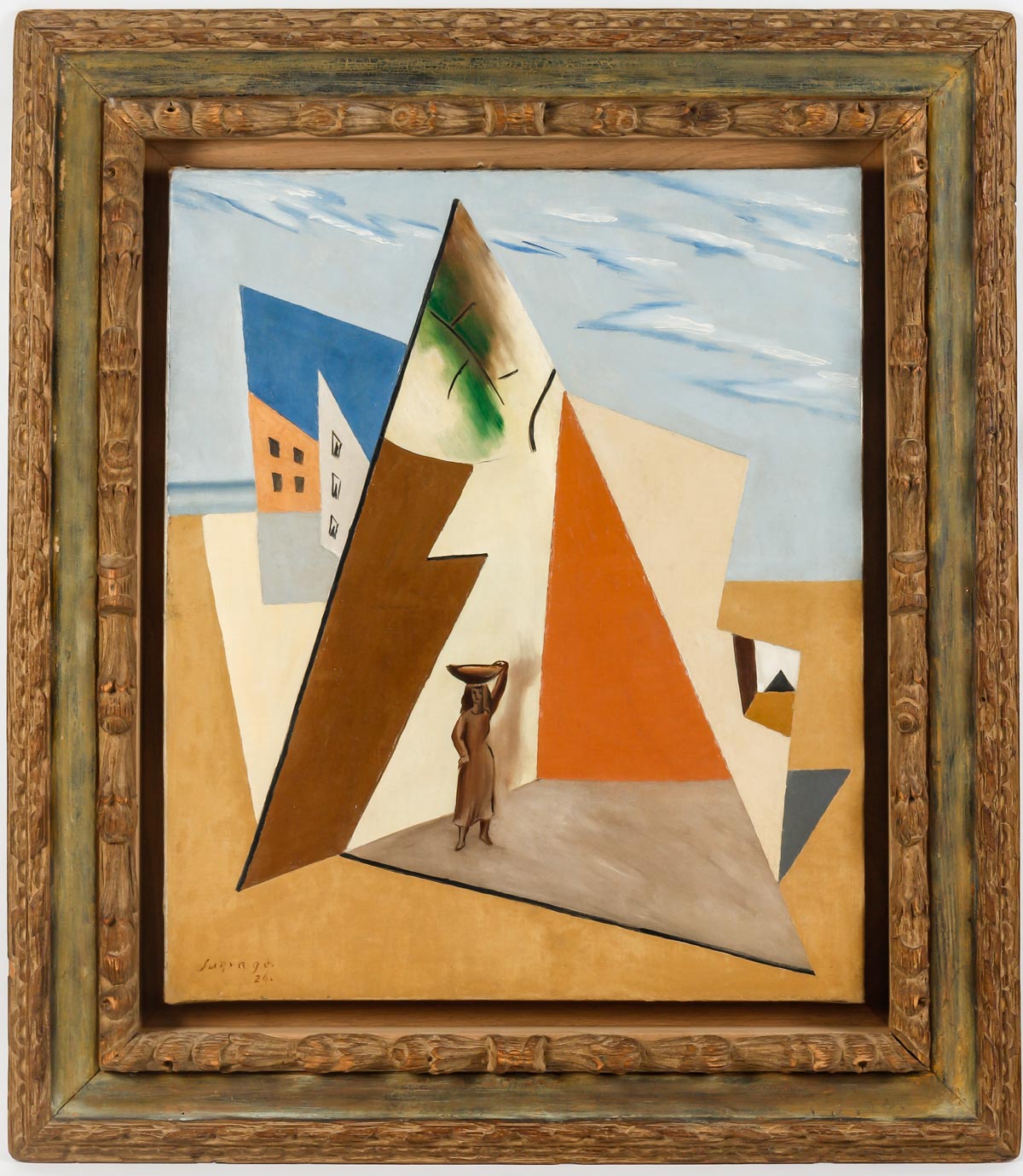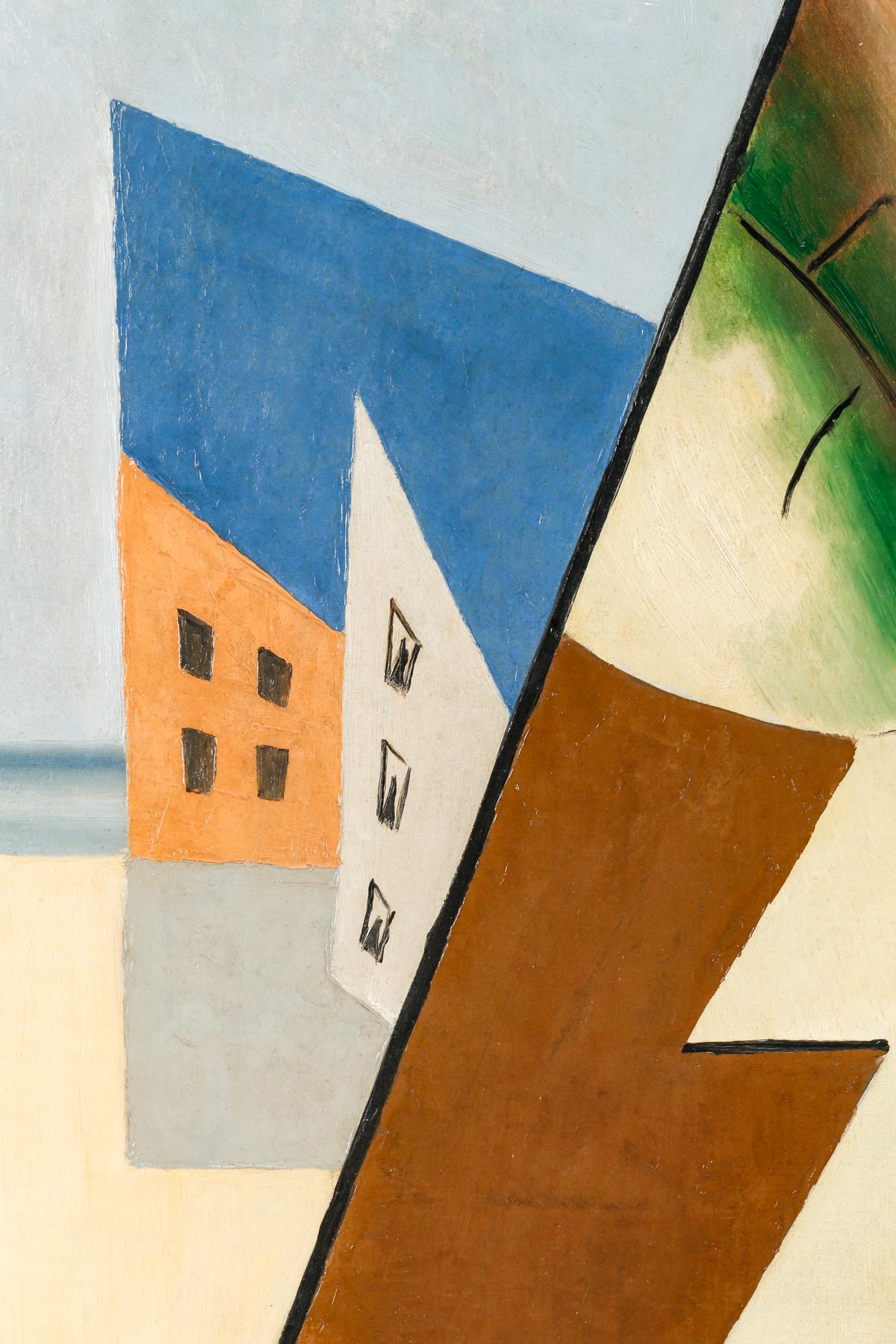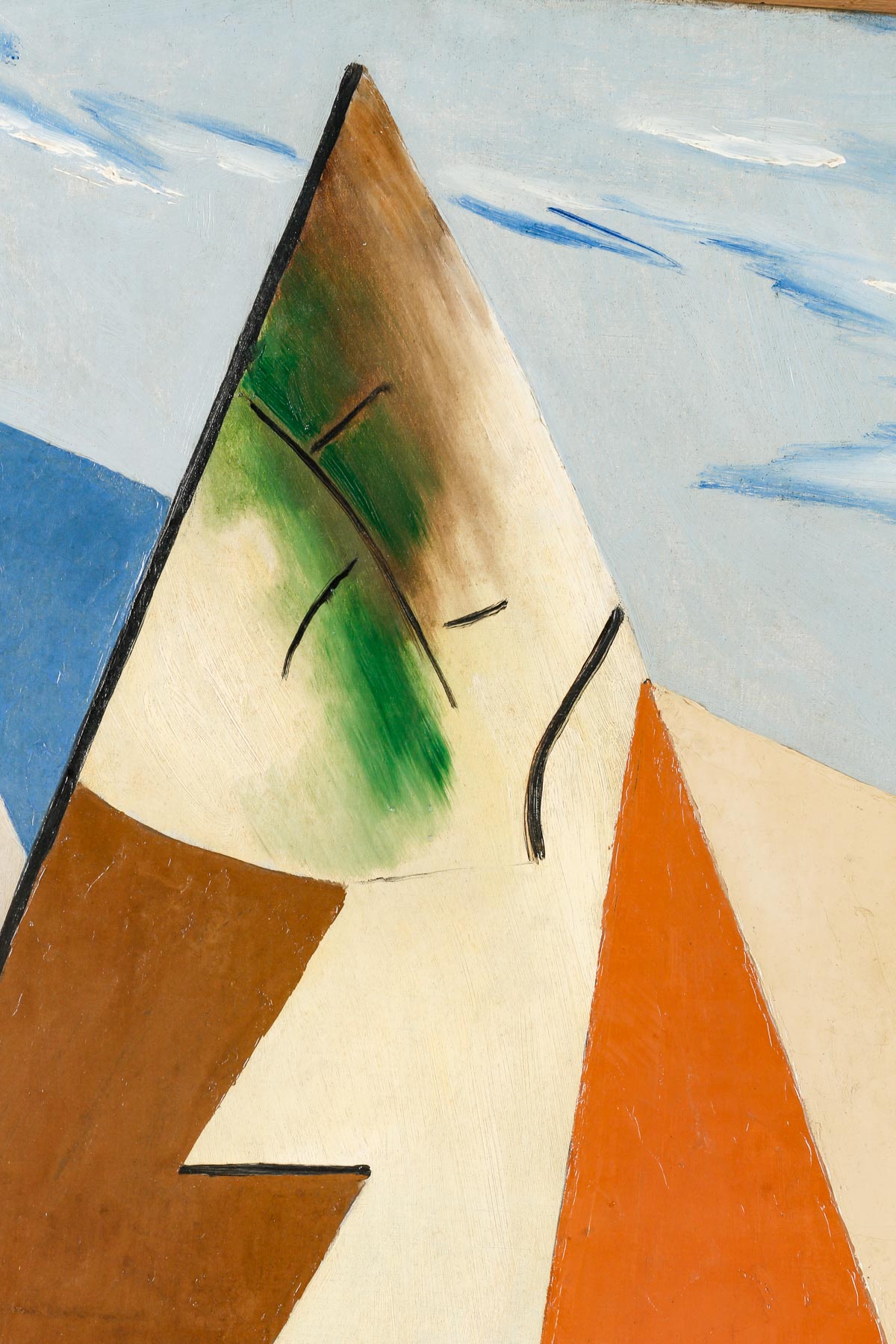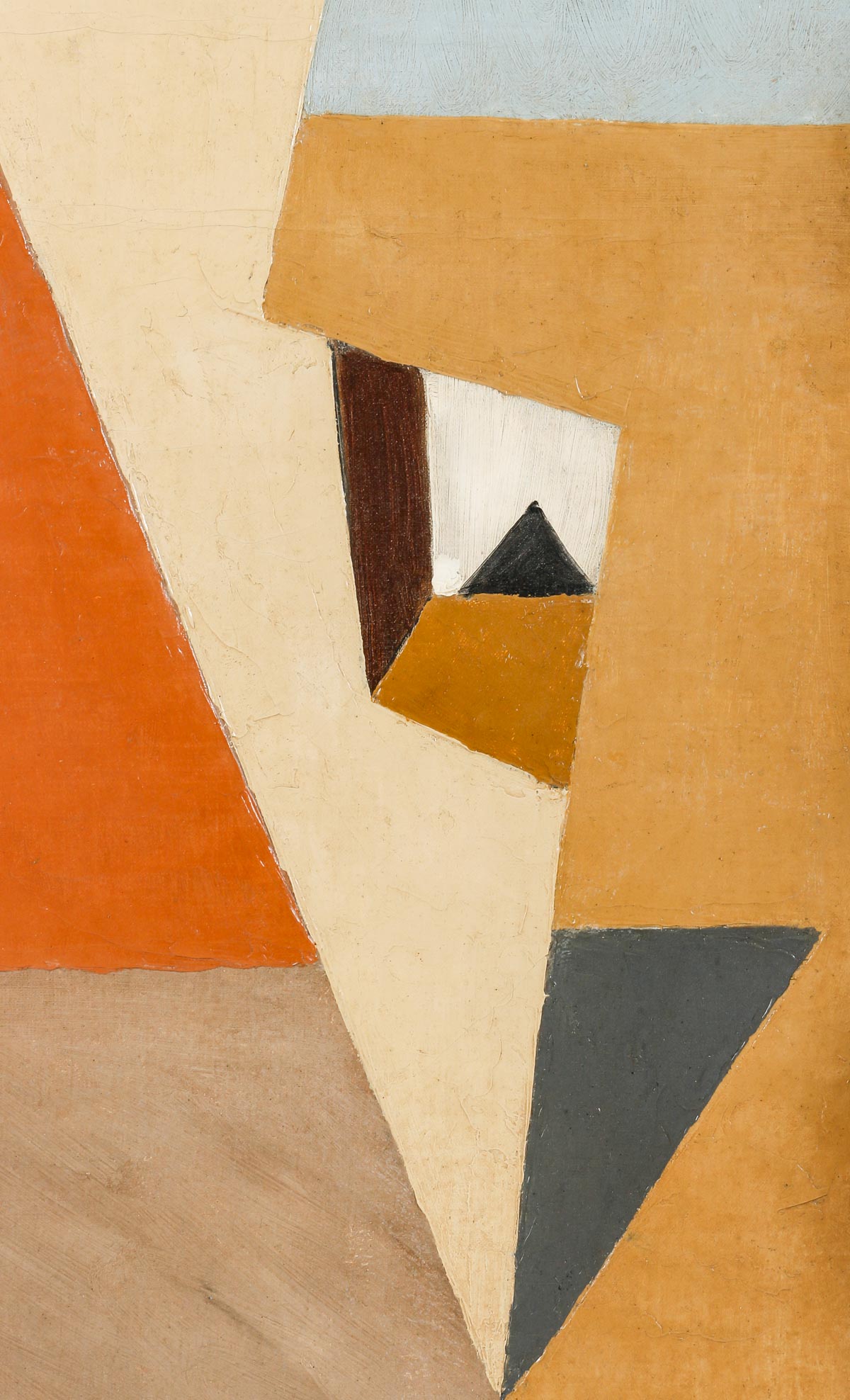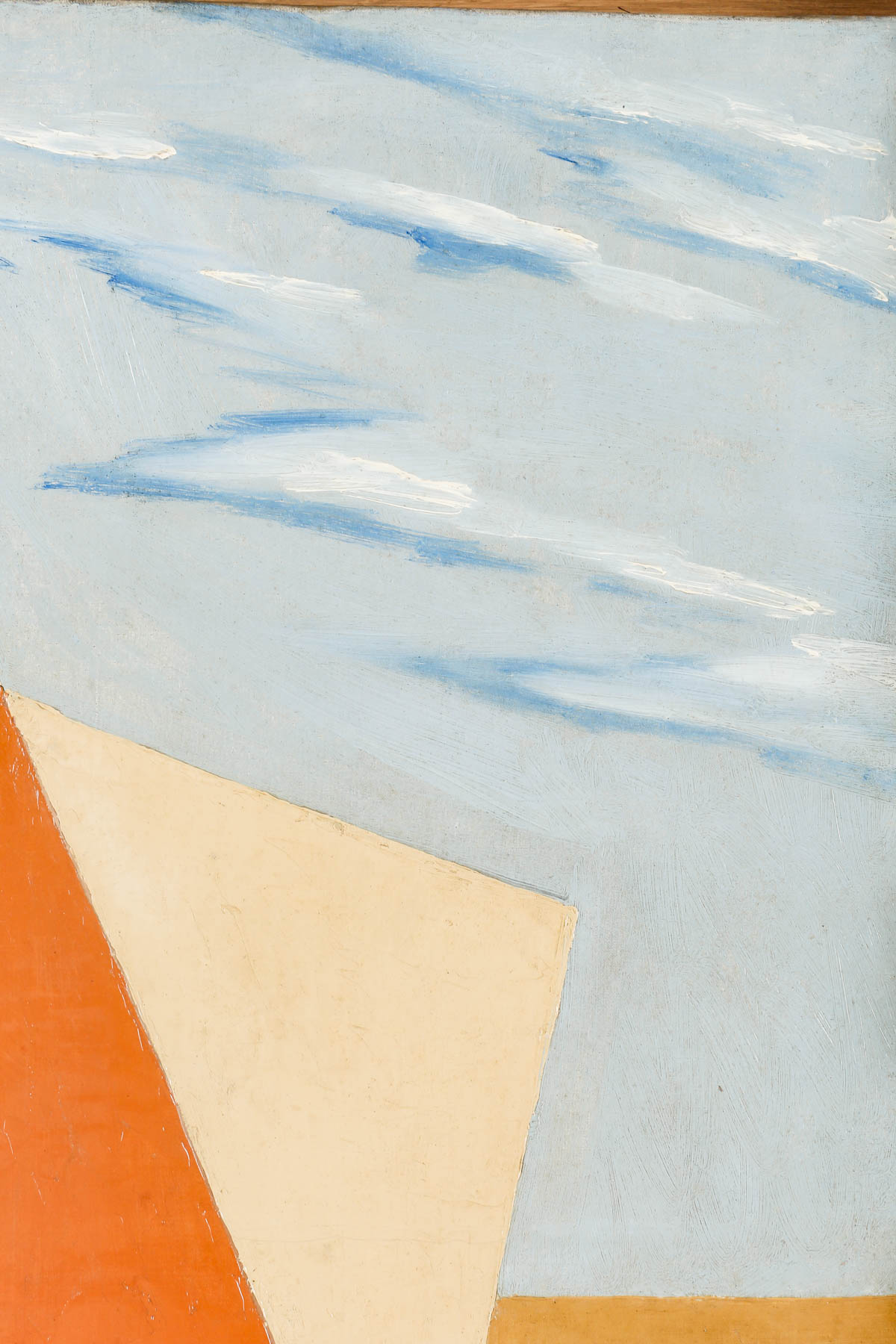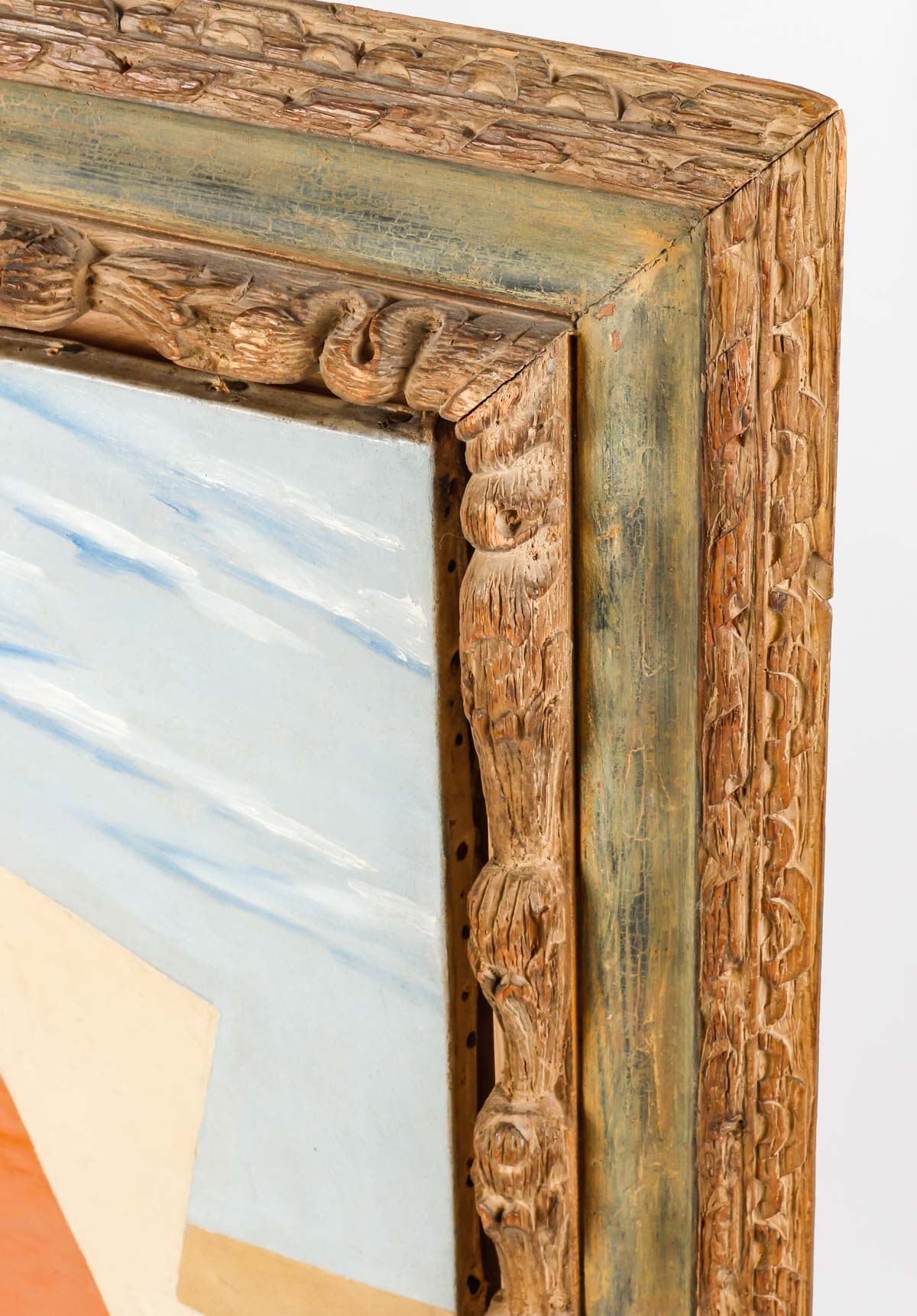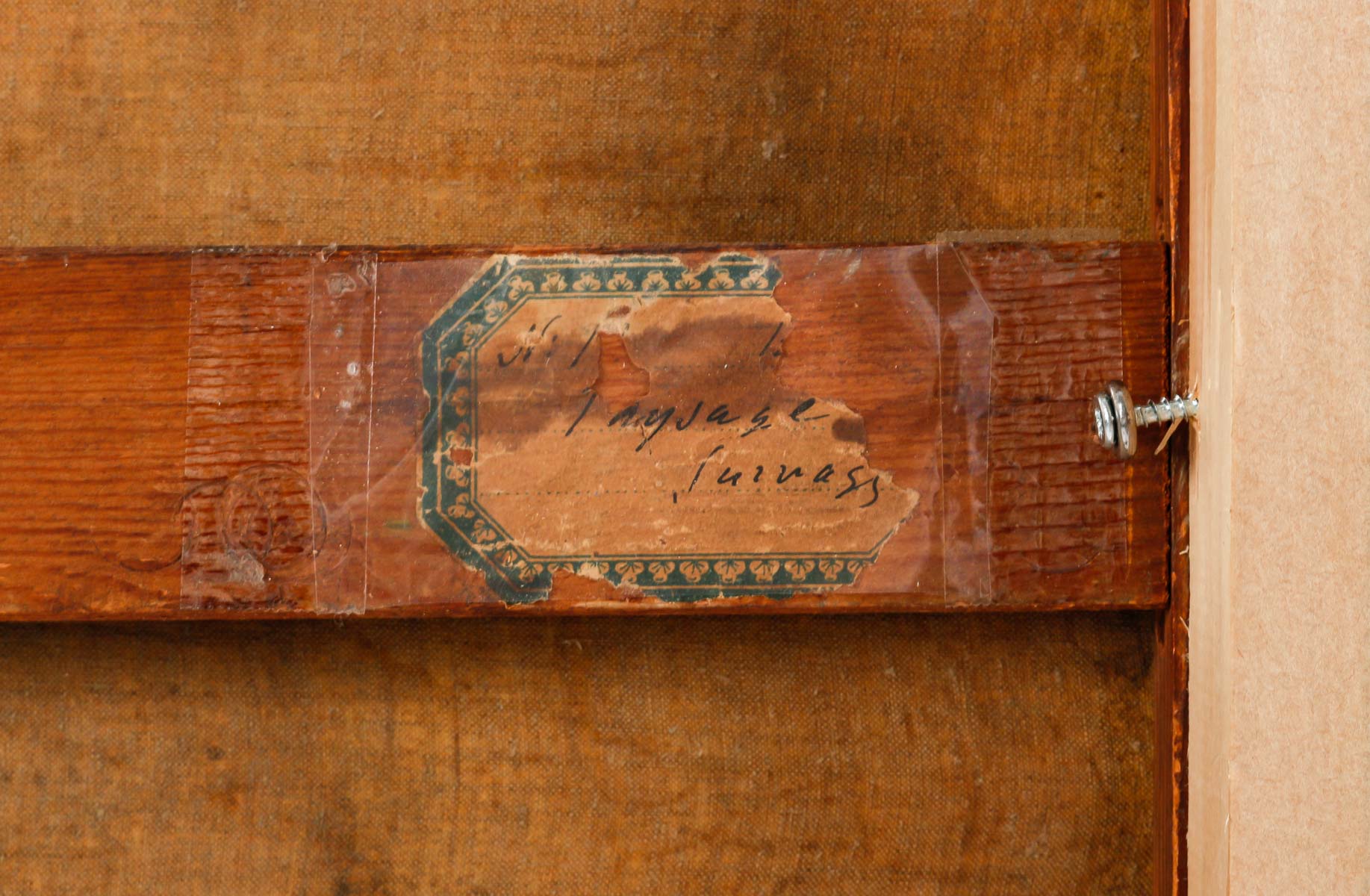Léopold Survage
A cubist, surrealist and dreamlike work by Paris School painter Léopold Survage depicting a water carrier in Collioure, dated 1926. A painting with a very balanced composition, rich in the presence of different elements: the city, the human presence, the vegetation, the sea, the sky, a window opening onto a vanishing point…
Oil on canvas signed and dated 1926 lower left
Dimensions: 65 x 54 cm
With frame: 90 x 79 cm
Provenance: former Thierry Le Luron collection
Mrs Anne Marie Di Vieto has confirmed that the work is listed in her archives.
Price upon request
Survage appears to be a true conduit of modernity.
“ He’ s an amazing painter” (Juan Gris)
A work from the Collioure years
Between 1925 and 1932, Léopold Survage made several visits to Collioure, the Mediterranean port where Matisse and Derain, a few years earlier, had produced some of the masterpieces of Fauvism. He then moved away from the cubism and abstraction of his beginnings. The city’s typical light and architecture shape his paintings. In Collioure, Survage revisits the myth of the Mediterranean woman, in turn a carrier, a fishmonger, a dreamer at the window… works in which Survage revives tragedy and ancient allegories. (“Survage: the Collioure years, 1925-1932 exhibition catalog: exhibition, Collioure, Museum of Modern Art, June 16 to September 30, 2012”)
The discovery of Collioure in the 1920s was also characterized by a new, warmer range of colors, with ochres and browns. Graphics are simplified.
Léopold Survage, an “unclassifiable artist”, is a major figure of the 20th century.
Throughout his life, Léopold Survage remained an unclassifiable artist, somewhere between cubism and surrealism, between figuration and abstraction.
He denies the pure cubism of Braque and Picasso’s still lifes and introduces architecture, landscape and always a character in relation to his environment.
The characters are schematized and, more often than not, set in an urban environment.
In his colourful canvases, he abolishes the rules of traditional perspective.
The painter has created a totally personal language to deliver his poetic vision of the universe, through metaphors and symbols…
Biography
Born in Moscow from a Finnish father and a Danish mother, and naturalized in France in 1927, Léopold Survage is a painter of multiple origins.
The Russian years
His father, Léopold Édouard Stürzwage, was a citizen of Villmanstrand (Finland). Léopold Survage is baptized into the Protestant religion. In 1886 he lost his mother, and the following year entered the Saint-Pierre et Saint-Paul school. On leaving high school, he worked in his father’s piano factory from 1897 to 1900. Fascinated by drawing and painting from an early age, he entered the Moscow School of Fine Arts in 1899 with Constantin Korovine and Leonid Pasternak, and visited the Chtchoukine private collection: Manet, Gauguin, the Impressionists, Matisse, etc…
In Moscow, he took part in various exhibitions, including the “Stephanos” exhibition in 1907-1908 at the Stroganov School House and the “Valet de Carreau” exhibition in 1910-1911. Meanwhile, his ruined father is liquidating his business. They left for Paris in July 1908.
The Paris School
When he arrived in Paris, he worked as a piano tuner at Pleyel. He then reunited with Archipenko, whom he had seen in Moscow, and attended classes at the Académie Matisse and the Académie Colarossi. First exhibitions from 1911 onwards, and in 1914 the principles of “colored rythm”, which establishes an analogy between colored visual form and music, were established.
Introduced by Guillaume Apollinaire to the circle of Baroness Hélène d’Oettingen, with whom he had a romantic relationship.
He met André Salmon, Picasso, Gino Severini, Robert and Sonia Delaunay and others. His autograph appears on one of the sheets signed by the guests at the memorable banquet given in Apollinaire’s honor on December 31, 1916 at the Ancien Palais d’Orléans on Avenue du Maine.
At the 1914 Salon des Indépendants, he showed colorful rhythms that he wanted to realize in film, anticipating research into abstract cinema.
In 1915, Survage moved to Saint-Jean Cap Ferrat with the Baroness of Oettingen, and remained on the Côte d’Azur until the end of the war. There he met his future wife, Germaine Meyer. In a letter to Léopold Zborowski dated December 31, 1918, Modigliani wrote: “I’m partying with Survage at the Coq d’Or… The champagne is flowing”. Apollinaire organized Survage’s first exhibition at Galerie Bongard in 1917, featuring thirty-two of his paintings. In 1920 Survage filed the articles of association for the “Section d’Or”, of which he was a founder along with Albert Gleizes, Archipenko and Braque.
This association organizes exhibitions in France and abroad. In 1921, he took part in the exhibition “Les Maîtres du cubisme” at the Galerie de L’Effort moderne. In 1922, he exhibited with Léonce Rosenberg and took part in the first Section d’Or exhibition in Italy, followed by a collective exhibition at Galerie Weill with Henri Hayden, Auguste Herbin, Irène Lagut, Jean Metzinger and Severini.
From 1922, Survage worked for Serge de Diaghilev’s Ballets Russes, designing sets and costumes for Igor Stravinsky’s opera bouffe, Mavra . In 1927, Samuel Putnam’s article on Survage in the Chicago Evening Post preceded a special exhibition in Chicago at the Chester Johnson Galleries. He then embarked on an international career, holding numerous solo and collective exhibitions in France and abroad.
He produced fabric designs for Chanel and religious compositions such as the crucifixion for Turku Cathedral in Finland in 1930. In 1937, he created a series of monumental panels for the Palais des Chemins de Fer at the Exposition des Arts et Techniques in Paris. These canvases, measuring 15.5 meters by 4 meters, will be awarded the gold medal.
He devoted himself to monumental painting in the 1950s-1960s: a fresco on the theme of Peace at the Palais des Congrès in Liège, which led him to spend eighteen months in Belgium in 1958, designed Le Coq et le Cheval cartoons for the Manufacture des Gobelins and illustrated literary works.
On March 12, 1963, he was made an Officer of the Legion of Honor.
Bibliography
– Survage: the Collioure years, 1925-1932: exhibition, Collioure, Musée d’art moderne, June 16 to September 30, 2012
– Daniel Abadie, Survage d’un seul trait. Preface to the Survage exhibition at Galerie Saint-Germain in 1974.
– Serge Fauchereau, Some remarks. Preface to the Survage exhibition in 1990.
– Léopold Survage, Entertainment. Cahiers de l’Abbaye Sainte-Croix, Les Sables-d’Olonne, 1975.
– Écrits sur la peinture, followed by Survage au regard de la critique, L’Archipel éditeur, Paris, 1992.
– Jeanine Warnod, Survage, André De Rache éditeur, Brussels, 1983.
– Daniel Abadie, Survage, les années héroïques, Anthese, 1993.
– Daniel Abadie, Survage: the Collioure years, 1925-1932, Somogy, Paris, 2012.
Museums
In France
– Paris, Musée national d’art moderne de la ville de Paris
– Céret, Céret Museum of Modern Art
– Lyon, Lyon Museum of Fine Arts
– Béziers, Béziers Museum of Fine Arts.
– Alès, Pierre-André-Benoit Museum-Library
– Nevers, Municipal Museum
Abroad
– San Francisco, museum of Modern Art
– New York, museum of Modern Art
– Geneva, Musée du Petit Palais
– Prague, National Gallery of Prague
– Liège , palais des congrès
Sources
https://fr.wikipedia.org/wiki/Léopold_Survage
https://www.mchampetier.com/biographie-Léopold-Survage.html
https://www.gazette-drouot.com/article/l-univers-selon-leopold-survage/13091
https://www.connaissancedesarts.com/arts-expositions/survage-ni-cubiste-ni-abstrait-au-musee-de-la-faience-et-des-beaux-arts-de-nevers-1192603/

